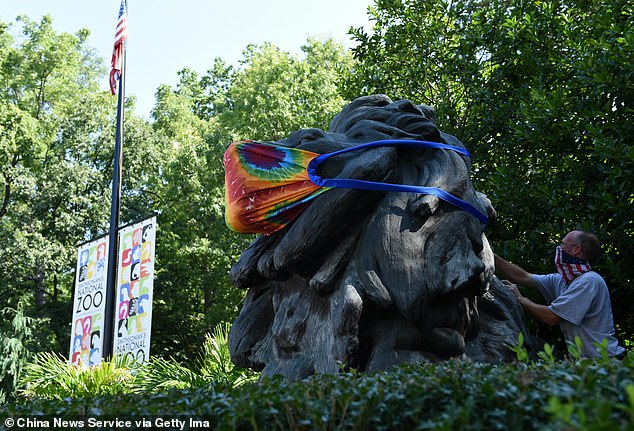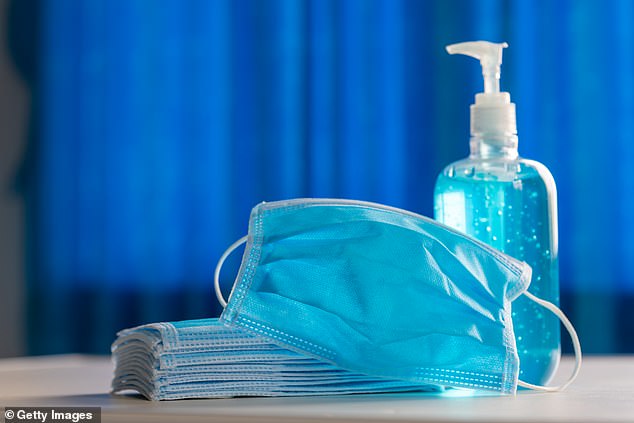The Smithsonian squandered $7.5 million in tax-funded pandemic money on dodgy face mask purchases and a $214,465-a-year doctor who barely saw COVID patients: says damning report
The Smithsonian blew $7.5 million in pandemic spending on dodgy purchases of face masks and disinfectants and the salary of a doctor who barely treated COVID patients, a scathing report says.
A federal government inspector says the world-famous museum and research center spent nearly $1.7 million of that money on overpriced pandemic-related items without shopping around for a better price.
The botched spending included $28,634 on water fountains at the National Zoo that did nothing to prevent the virus, and a $214,465-a-year doctor who barely saw coronavirus patients.
The Smithsonian did not respond to DailyMail.com’s request for comment.
The Smithsonian’s poor tracking of COVID money means it may not get a dime in the next crisis

A tourist visits the Smithsonian’s National Zoo during the pandemic in August 2020
The overspending shows how government departments and agencies spent taxpayer-funded CARES Act funds chaotically after COVID ravaged the US, claiming 1.2 million lives and putting the country on lockdown.
The Department of Health and Human Services inspector general said in his report that the museum “has not consistently spent CARES Act funds in accordance with applicable laws, policies and procedures.”

Inspector General Christi Grimm
The museum received $7.5 million in pandemic relief funds but was unable to justify $1,673,577 of those expenses, in some cases because it paid too much for items because it didn’t shop around properly, the report said.
This included $502,738 spent on face masks and hand sanitizers, the 39-page report said.
Another $28,999 was spent on manual water fountains, printing supplies, a phone case and a fire safety guide, which were not eligible for funding.
The water fountains for the zoo’s Asia route had to be controlled by sensors so patrons wouldn’t touch the devices and spread the virus.
But museum officials soon realized there was no electricity in that part of the zoo, and the fountains were switched to regular manual fountains, which did not qualify for funding.
The auditor also focused on a $214,465-a-year physician who was hired at the start of the pandemic in July 2020.

The Smithsonian wasn’t looking for the best price when it bought masks and sanitizer
The doctor’s boss estimated that 95 percent of their workload was related to the pandemic.
But upon inspection, it was found that only 6 percent of their appointments were for COVID patients.
The Smithsonian must work harder to justify its purchases, track taxpayer-funded items and log transactions, the report said.
“If these issues are not fully addressed, it could impact the Smithsonian’s ability to effectively manage future emergency funding,” the report says.
It’s just the latest example of COVID funds going wrong.
Researchers found that the $1 billion fund Congress gave to the Pentagon for medical equipment for the pandemic was instead largely funneled to defense companies and used to make things like jet engine parts, body armor and dress uniforms.
An AP investigation last year found that fraudulent and dubious use of COVID cash was the “largest scam in American history.”
Scammers may have stolen more than $280 billion in COVID-19 relief funding; another $123 billion was wasted or misspent.
Combined, the loss represented 10 percent of the $4.2 trillion the U.S. government had disbursed in COVID relief aid.
